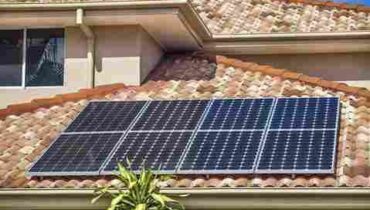Table of Contents
Solar technology has rapidly evolved, transforming the way we harness the sun’s energy. In a world increasingly focused on sustainability and renewable energy, the latest advancements in solar technology are pivotal. This article explores the cutting-edge developments that are revolutionizing how we harness the power of the sun for a cleaner, more sustainable future.
In today’s rapidly changing world, the quest for sustainable and clean energy sources has never been more critical. Solar technology has emerged as a shining star in the pursuit of renewable energy solutions. This article will delve into the latest advancements in solar technology, offering insights into how innovation is revolutionizing the way we harness the power of the sun.
The Evolution of Solar Technology
Solar technology has undergone a remarkable evolution over the years, transforming from a niche energy source into a mainstream and sustainable power solution. This article explores the fascinating journey of solar technology, tracing its development from its humble beginnings to cutting-edge innovations that promise a brighter, cleaner future.
Traditional Photovoltaic Cells
Traditional photovoltaic cells, or solar panels, have been a cornerstone of solar technology for decades. These cells convert sunlight into electricity through the photovoltaic effect, where semiconductor materials absorb photons and release electrons. While effective, these cells have limitations in terms of efficiency and aesthetics.
Thin-Film Solar Technology
Thin-film solar technology is a promising advancement. These panels are lightweight and flexible, making them ideal for integration into various surfaces. This technology has opened the door to solar-integrated windows, roofing materials, and even clothing. As research continues, we can expect further improvements in efficiency and affordability.
Concentrated Solar Power (CSP)
Concentrated Solar Power systems focus sunlight onto a small area, often using mirrors or lenses. This concentrated energy is then used to generate heat, which can produce electricity or power other industrial processes. CSP is particularly suitable for large-scale applications and is gaining traction in regions with abundant sunlight.
Solar Panel Technology
Solar panel technology refers to the various methods and materials used to capture sunlight and convert it into electricity or heat. Solar panels, also known as photovoltaic (PV) panels, are at the heart of solar technology. These panels use the photovoltaic effect to generate electrical power from sunlight. Here’s an overview of solar panel technology:
1. EF ECOFLOW 2PCS 100W 12V Solar Panels
Product Specification:
- Type: Monocrystalline PV Modules
- Quantity: 2 solar panels included
- Wattage: 100 Watts per panel
- Voltage: 12 Volts
- IP Rating: IP68 (waterproof)
- Ideal Use: RV & Marine Rooftops, Farm Battery Charging, Power Kits & Ecosystem
- Description: These high-efficiency monocrystalline solar panels come as a pair and are rated at 100 watts each. They are designed for 12-volt systems and are IP68 waterproof, making them suitable for outdoor and marine applications. These panels are perfect for RVs, boats, and farms where you need reliable power generation.
2. Renogy 2PCS 100 Watt Solar Panels
Product Specification:
- Type: Monocrystalline PV Modules
- Quantity: 2 solar panels included
- Wattage: 100 Watts per panel
- Voltage: 12 Volts
- Solar Charge Controller: Included (Rover 40 Amp 12V/24V DC Input MPPT)
- Description: Renogy’s 100-watt monocrystalline solar panels come in a pair and are designed for 12-volt systems. These panels are equipped with high-efficiency monocrystalline cells, which means they can effectively convert sunlight into electricity. Additionally, this package includes the Rover 40 Amp MPPT Solar Charge Controller, which helps optimize charging and prolong battery life.
3. Portable Solar Panel 200W 18V Foldable Solar Charger Kit
Product Specification:
- Wattage: 200 Watts
- Voltage: 18 Volts
- Portability: Foldable design for easy transportation
- Output: MC-4 Output for charging various devices
- Ideal Use: Phones, RVs, Laptops, Camping, Off-Grid, Outdoor, Emergency Power Outage
- Description: This portable solar panel kit provides 200 watts of power and is designed for easy transport with its foldable design. It can charge various devices and is versatile for different applications, including RVs, camping, and emergency power during outages.
4. Goal Zero Nomad 200-Watt Solar Panel
Product Specification:
- Wattage: 200 Watts
- Design: Folding Solar-Panel Charger with Kickstand
- Portability: Highly portable with the included kickstand
- Ideal Use: Charging Goal Zero power stations and devices
- Description: The Goal Zero Nomad 200-Watt Solar Panel is a folding solar charger with a kickstand, making it easy to set up and position for maximum sun exposure. It’s designed for charging Goal Zero power stations and various devices, providing a portable and reliable power source for outdoor activities and emergencies.
These solar panels and kits offer a range of options for various power needs and applications, from outdoor adventures to off-grid living. Be sure to choose the one that best fits your specific requirements and the devices you intend to power.
Cutting-Edge Solar Innovations
Solar technology is continuously evolving, and recent innovations are poised to transform the energy landscape. These cutting-edge developments promise increased efficiency, affordability, and versatility in harnessing the power of the sun. This article delves into the most exciting breakthroughs in solar technology.
The realm of solar technology is continually evolving, with groundbreaking innovations that promise to revolutionize the way we harness the power of the sun. These cutting-edge developments are at the forefront of a cleaner, more sustainable energy future.
Tandem Solar Cells
Tandem solar cells are revolutionizing the solar industry. They use multiple layers of different materials to capture a broader range of the solar spectrum. This results in higher efficiency and energy production. Tandem solar cells are poised to significantly increase the energy output of solar installations.
Perovskite Solar Cells
Perovskite solar cells have garnered attention for their impressive efficiency and low manufacturing costs. These cells use a unique class of materials called perovskites, which can be easily synthesized and integrated into solar panels. With ongoing research, perovskite solar cells are expected to become more commercially viable and accessible.
Bifacial Solar Panels
Bifacial solar panels capture sunlight from both the front and rear sides, increasing their energy output. These panels can be installed on various surfaces, from the ground to rooftops. By harnessing reflected and diffused sunlight, bifacial panels offer a practical solution for increasing solar power generation.
Smart and Sustainable Solar Solutions
In a world striving for cleaner and more sustainable energy sources, smart and sustainable solar solutions have emerged as a beacon of hope. These innovations not only enhance the efficiency of solar energy but also contribute to the reduction of our carbon footprint. This article explores the latest developments in smart and sustainable solar technology, shaping the way we harness the power of the sun for a brighter, more environmentally friendly future.
Solar-Tracking Systems
Solar-tracking systems are designed to follow the sun’s path throughout the day, ensuring panels are always at the optimal angle for maximum sunlight exposure. This technology can significantly boost energy output and make solar installations more efficient.
Solar Energy Storage
Efficient energy storage is a key challenge in the renewable energy sector. Advances in battery technology have made it possible to store excess solar energy for use during nighttime or cloudy days. Integrating solar panels with energy storage solutions ensures a reliable and constant energy supply.
FAQs: Solar Technology
1. What is solar technology?
Solar technology refers to the use of devices and systems that capture and convert sunlight into usable energy, typically electricity or heat. It includes a range of technologies like photovoltaic cells (solar panels), concentrated solar power, and other innovations that harness the power of the sun for various applications.
2. How do solar panels work?
Solar panels work by using photovoltaic cells to convert sunlight into electricity. These cells contain semiconductor materials that absorb photons from sunlight, creating an electric current. The electricity generated can then be used to power homes, businesses, or other electrical devices.
3. What are the latest advancements in solar technology?
The latest advancements in solar technology include tandem solar cells, perovskite solar cells, thin-film technology, bifacial solar panels, and smart tracking systems. These innovations aim to increase efficiency, reduce costs, and expand the range of applications for solar energy.
4. Are solar panels environmentally friendly?
Solar panels are considered environmentally friendly because they produce electricity without emitting greenhouse gases or other pollutants. They help reduce reliance on fossil fuels, which are a major contributor to climate change. However, the production and disposal of solar panels do have environmental impacts, so recycling and sustainable manufacturing practices are crucial.
5. How efficient are solar panels?
The efficiency of solar panels can vary, but traditional silicon-based panels typically have an efficiency of 15-20%. Newer technologies like tandem and perovskite solar cells have the potential to achieve higher efficiencies, some even exceeding 30%. However, these technologies are still evolving.
6. Can solar panels work in cloudy or rainy conditions?
Solar panels can still generate electricity in cloudy or rainy conditions, albeit at reduced efficiency. While direct sunlight is optimal for power generation, panels can harness diffused or scattered sunlight to produce electricity. Energy storage systems, like batteries, can store excess energy for use during cloudy days or at night.
7. What is the lifespan of solar panels?
Most solar panels are designed to last 25 to 30 years or more. They typically come with warranties that guarantee a certain level of performance over a specified period. After this period, panels may continue to produce electricity, but at a reduced efficiency.
Conclusion
As the world embraces the importance of renewable energy sources, the latest solar technology innovations play a pivotal role in transforming the energy landscape. From traditional photovoltaic cells to cutting-edge tandem and perovskite solar cells, and from smart tracking systems to efficient energy storage, solar technology continues to evolve, making clean and sustainable energy more accessible and affordable.
The future is undoubtedly bright for solar energy, and as research and development efforts persist, we can expect even more groundbreaking discoveries in the world of solar technology. These innovations not only reduce our environmental footprint but also pave the way for a brighter and cleaner future powered by the sun.

